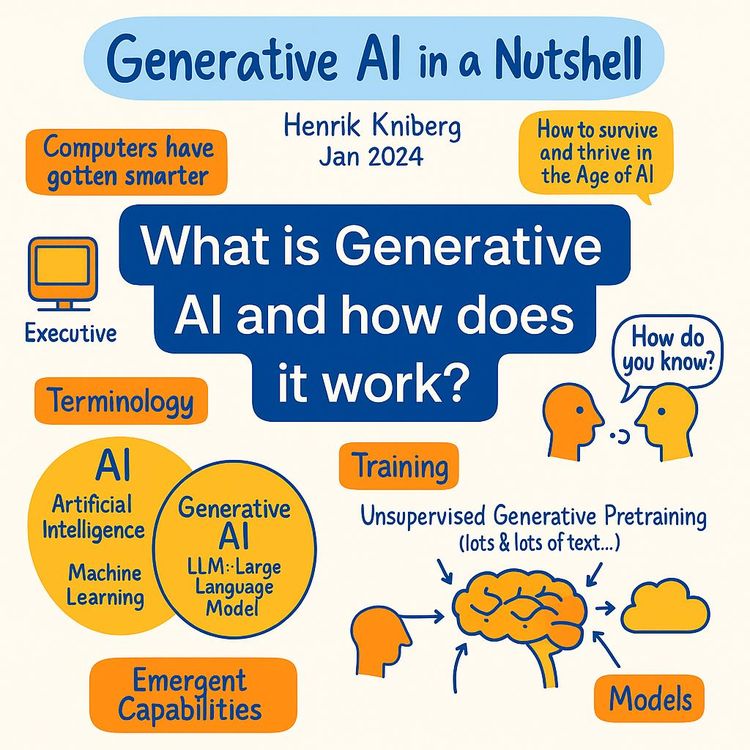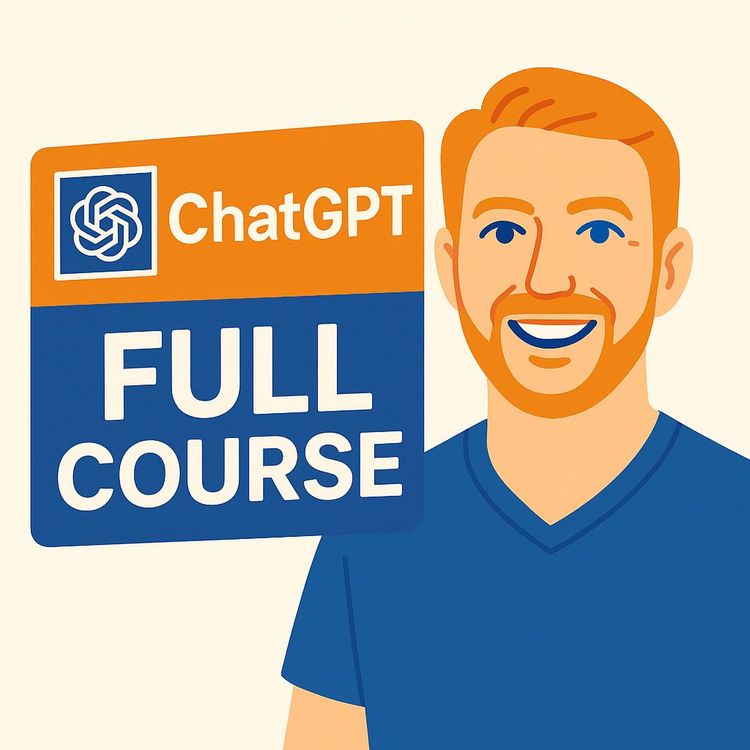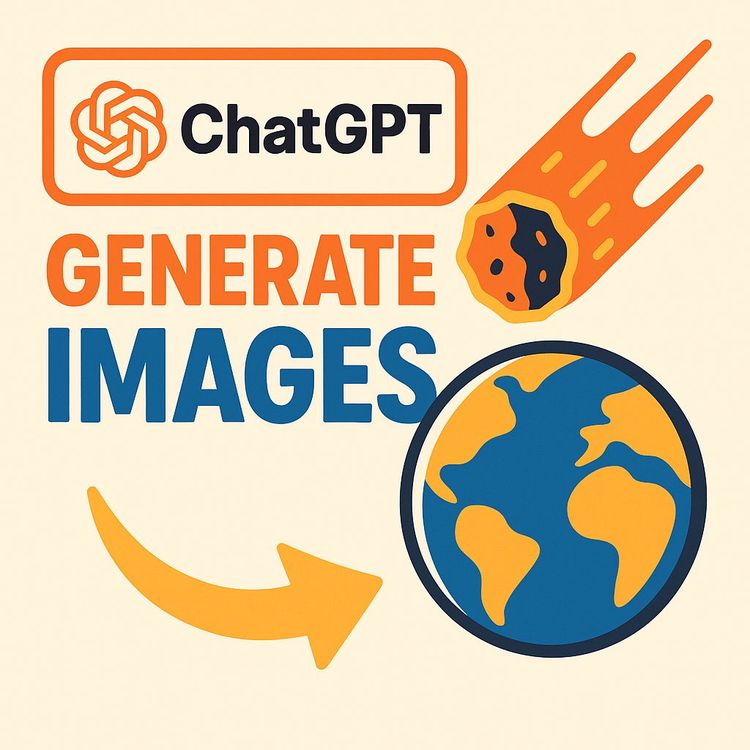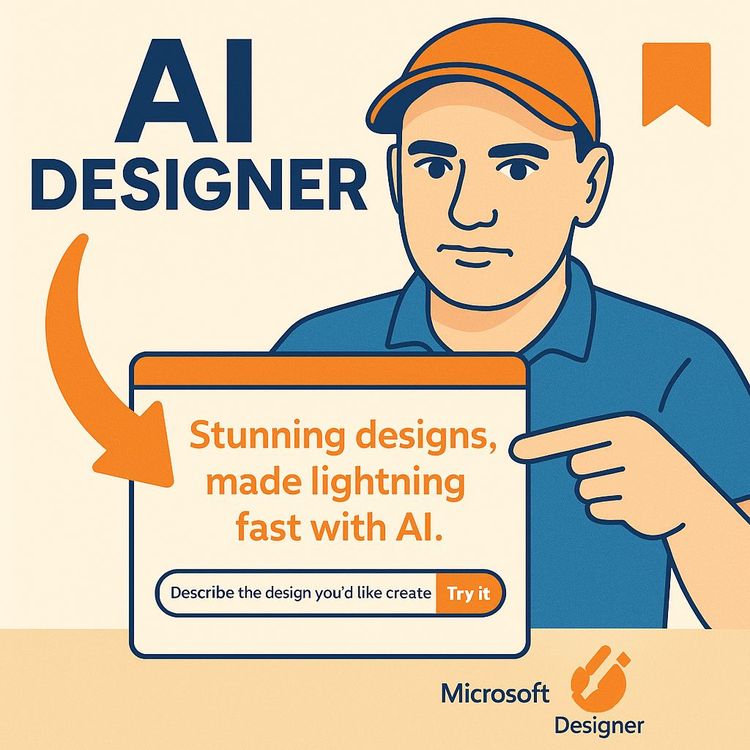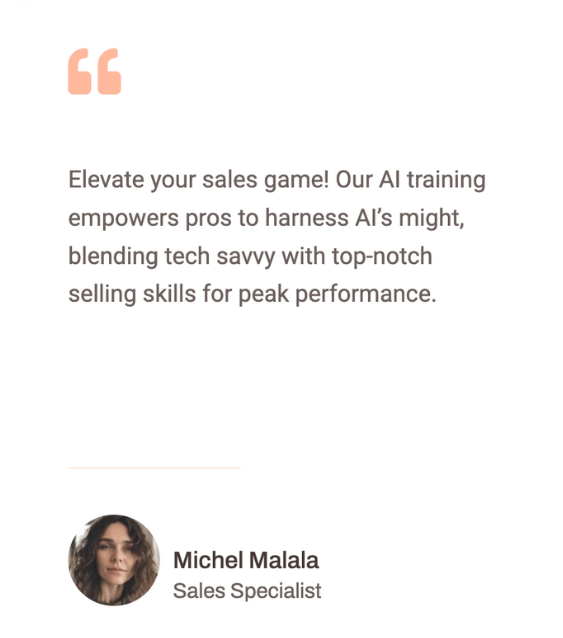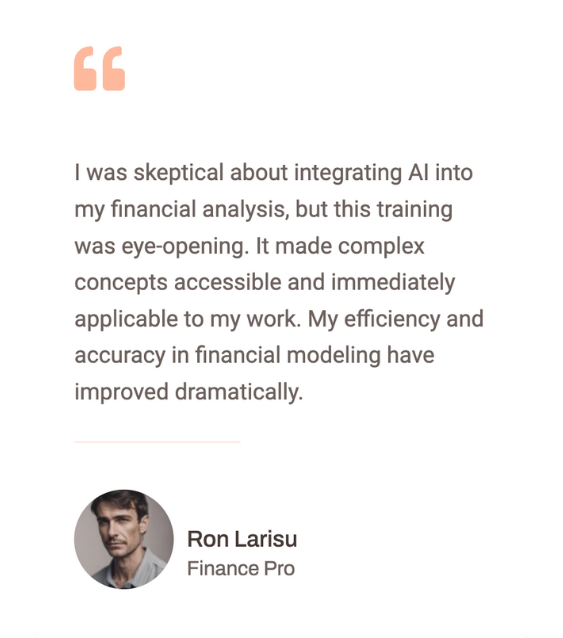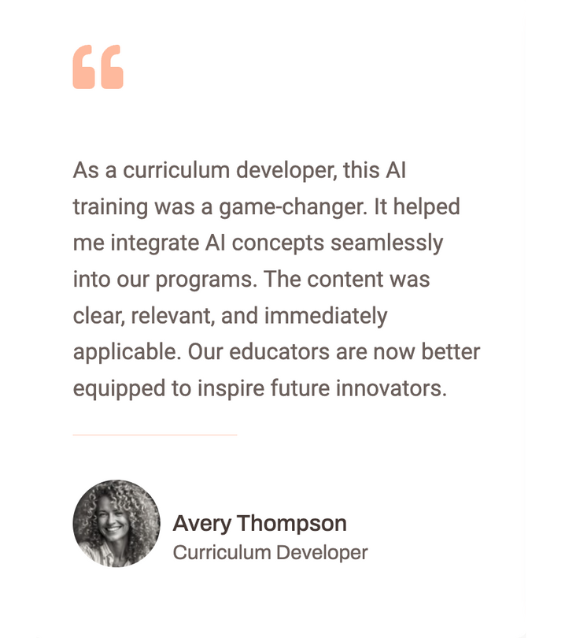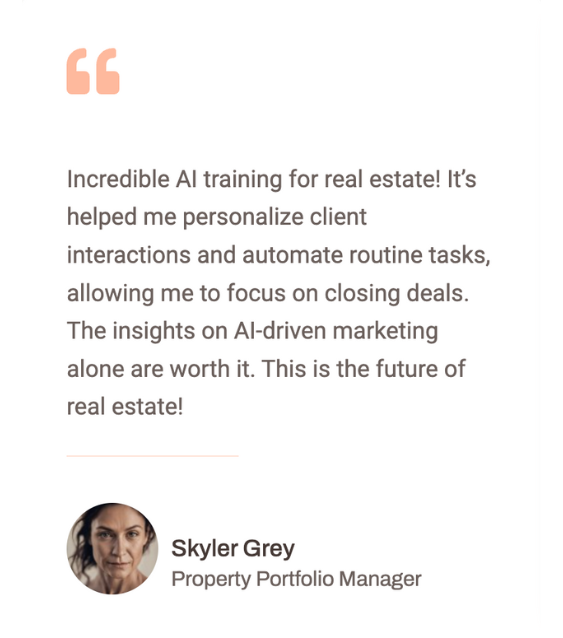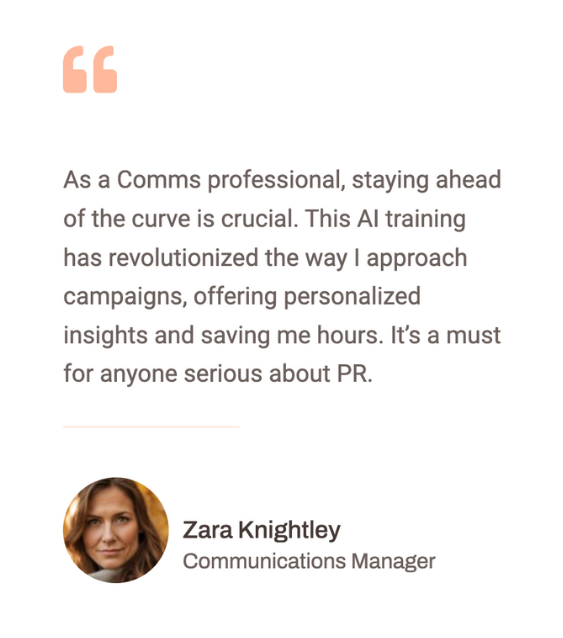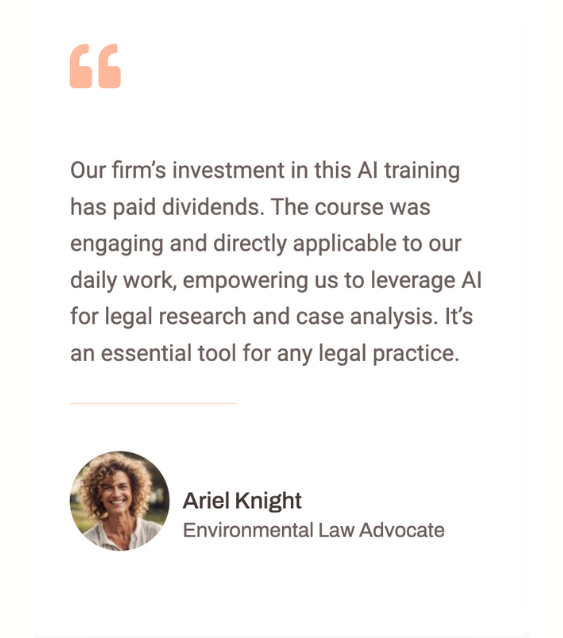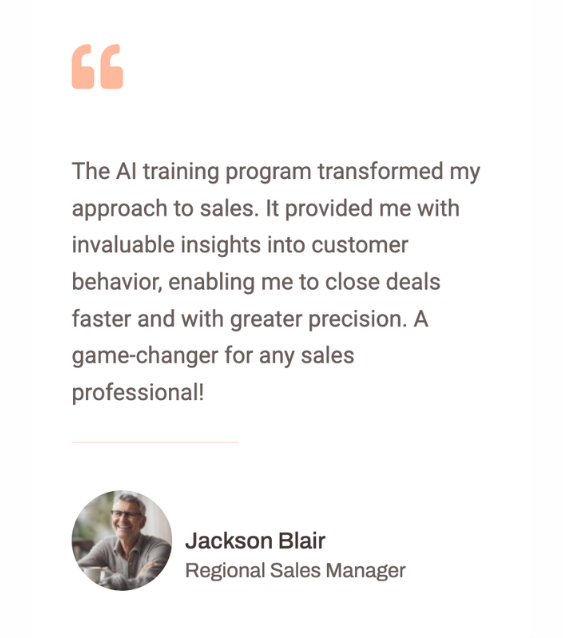AI-Powered Dropshipping: Find Winners, Build, Run Facebook Ads (Video Course)
Grab a straightforward game plan for dropshipping in 2026: find products people actually want, build a clean store with AI in minutes, and run Facebook/IG ads with a simple CBO test. Quick to launch, clear metrics, low overhead, so you see what's working.
Related Certification: Certification in AI-Driven Dropshipping: Find Winners, Build Stores & Run FB Ads
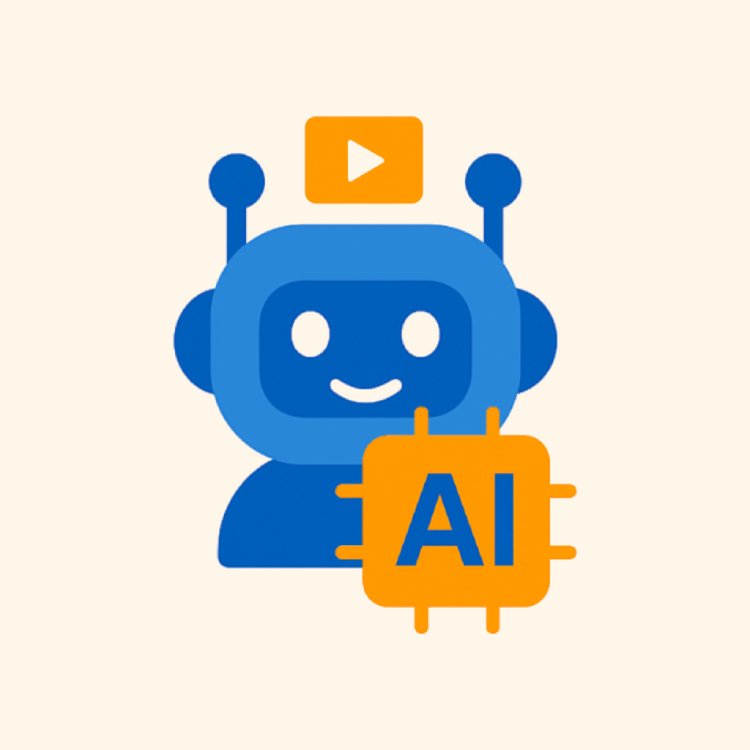
Also includes Access to All:
What You Will Learn
- Use AI to find and validate trending, problem-solving products
- Build a brandable hybrid Shopify store with AI copy and images
- Automate fulfillment and supplier backups with AutoDS for fast shipping
- Create AI-driven ad creatives and run CBO tests on Facebook/Instagram
- Interpret metrics, diagnose bottlenecks, and scale with upsells and email/SMS
Study Guide
Introduction: Why This Course Matters
You don't need to reinvent e-commerce to build a profitable dropshipping business. You need a reliable system. That system is exactly what you're about to learn. We're going to walk through a complete, modern playbook for starting and scaling a dropshipping store using AI,end to end. You'll go from "what even is a winning product?" to a fully automated storefront, verified suppliers, AI-built pages, AI-made creatives, and a no-nonsense Facebook/Instagram ad strategy that validates products quickly and scales what works.
Here's the value: AI compresses time. It removes busywork, shortens learning curves, and lets you focus on decisions that actually move revenue. You will learn how to use AI to spot trends early, verify product-market fit, build a hybrid store fast, automate fulfillment, produce ad content in hours (not weeks), and diagnose ad performance like a pro. We'll keep it practical, step-by-step, and brutally honest. This isn't theory. It's a blueprint.
By the end, you'll know how to launch, get your first sale, and scale on command,without getting lost in perfectionism or tech rabbit holes.
What You'll Learn
To keep you grounded, here's what you'll be able to do after this course:
- Identify and validate "winning" products using a simple, repeatable framework.
- Set up a brandable hybrid store to test products across niches without rebranding.
- Plug into an automated fulfillment system so orders ship without manual work.
- Use AI to generate names, copy, images, and video ads,fast and on-brand.
- Build and launch a simple, effective Facebook/Instagram ad campaign for testing.
- Read your data, troubleshoot issues, and scale using clear metrics and thresholds.
- Implement upsells, bundles, email/SMS flows, and creative iteration to lift profits.
- Understand the ethics, policies, and practical legal considerations in dropshipping.
Part 1 , Foundations: The Dropshipping Model and Mindset
Dropshipping is simple on paper: you sell first, buy from a supplier after the sale, and ship directly to the customer. No inventory. No warehouse. The catch is execution. The winners follow a system and move faster than everyone else. That's where AI comes in,it reduces the time between idea and data. You'll test more products, make better decisions, and scale what works while others are still "working on their store."
Before we go tactical, anchor on this: the product is the business. A great product makes marketing and store design easier. A mediocre product will drain your budget no matter how fancy your site looks.
Examples:
- Selling a device that fixes a daily annoyance (like a car vent phone mount that actually sticks) is easier than selling a random novelty item. One solves a real problem; the other creates one.
- Offering a home therapy massager with strong social proof and fast shipping will outperform a generic massager with slow shipping and weak reviews,even if the ad spend is the same.
Part 2 , Finding and Validating Winning Products
This is the most important section. Everything rises and falls with product selection. Use the three product principles as your filter, then validate with AI for speed and objectivity.
The Three Principles of a Winning Product
Principle 1: Recent Trend Viability. You want products that are gaining momentum now, not leftovers from last year's hype. Early is profitable; late is crowded.
Principle 2: Problem-Solving Utility. It should fix a real pain point or unlock a desired outcome. Selling solutions is easier than selling items.
Principle 3: High Perceived Value. Customers should feel your price is a bargain relative to the outcome they're buying. That gives you margin for ads and profit.
Examples:
- Recent Trend Viability: A compact countertop ice maker spiking in short-form videos across platforms within the last month; or a travel-size garment steamer blowing up in "packing hacks" clips. You're catching rising waves, not chasing old ones.
- Problem-Solving Utility: A pet hair remover that actually lifts hair from carpets in a single pass; or a posture-correcting wearable that provides haptic feedback to stop slouching. Clear problem → clear message → higher conversion.
- High Perceived Value: A $39 LED skin therapy wand viewed as an alternative to a $200 spa treatment; or a $49 ergonomic footrest that improves home office comfort compared to costly chairs. The perceived "deal" drives margin.
AI-Powered Product Research: Two Proven Methods
Method 1: Facebook Ads Library.
Use it to see what's spending on Meta right now. It's great for reconnaissance and idea generation, but understand you're looking at live competition. Search the library with e-commerce-leaning phrases to filter quickly.
How-To:
- Go to the Facebook Ads Library and choose "All Ads."
- Search terms like "free shipping today only," "trending on TikTok," "limited time offer," "50% off."
- Open ads that get your attention. Check the start date, creative angles, landing pages, and offers.
- Save ideas, but treat this as "what's working for others" rather than your final answer.
Examples:
- You spot a high-engagement ad for a compact car vacuum with a recent start date and variants of the same creative running across multiple pages,good indicator of spend and testing.
- You find a kitchen gadget (automatic stirrer) running with different cuts and hooks ("No more sore wrists," "Soup on autopilot"). Multiple creatives suggest ongoing investment.
Method 2: TikTok Shop Trend Mining with Kalodata.
This is where you can get ahead. Find items taking off on TikTok Shop and bring them to Facebook/Instagram before they saturate.
How-To:
- In Kalodata, filter products by launch within the last 30 days.
- Sort by sales velocity and look for sharp upward trends.
- Target price bands where ads can be profitable. Many find $20-$40 great for entry-level testing because it leaves room for ad spend and margin.
- Save links to top-performing UGC videos for your initial creative brainstorm (or for reference to brief AI tools).
Examples:
- A pet paw cleaner with a hockey-stick sales curve in the last two weeks and several viral review clips,perfect for running on Meta where it's still "new."
- A foldable LED book light trending as "nighttime reading hack," with creators posting real-use clips you can mirror or re-create with AI.
AI-Based Product Validation
Don't overthink,systemize. Use an AI validator to score your finds against your criteria and kill the duds fast.
Simple Workflow:
- Create a scoring rubric: Trend Velocity (0-10), Problem-Solving Clarity (0-10), Perceived Value vs. Cost (0-10), Creative Potential (0-10), Shipping Feasibility (0-10).
- Prompt an AI assistant with your rubric and a product URL. Ask for a "Test" or "Skip" with a brief justification and risk notes.
- Save the output to a spreadsheet or Notion database with a "Test/Skip" tag. Use Zapier/Make to automate input/output if you want.
Examples:
- The AI flags a fabric shaver as "Test" because it solves a visible problem (lint/pilling), has strong before/after creative potential, and ships small/light for speed.
- The AI flags a giant inflatable pool toy as "Skip" due to bulky shipping, seasonal demand, and likely returns from punctures.
Important Notes on Ethics and Claims
If you sell health, wellness, or cosmetic items, be careful with claims. Avoid promising cures. Be accurate and conservative. Use disclaimers where appropriate and follow platform advertising policies. Long term, honesty converts better and keeps your ad accounts safe.
Examples:
- Instead of "erase wrinkles," use "visibly reduce the appearance of fine lines." It's safer and still persuasive.
- For posture devices, avoid medical claims. Focus on comfort, reminders, and habit support rather than promising medical outcomes.
Part 3 , Fulfillment and Supplier Strategy
Your fulfillment system is your backbone. If it's weak, your growth will snap it in half. The fastest way to stability early on is using an automation platform that integrates sourcing, order processing, and tracking sync.
Automated Fulfillment with AutoDS
Plug a tool like AutoDS into your store to remove manual work from day one. It gives you a large product catalog, custom sourcing requests, order automation, and tracking sync. The big unlock: access to regional warehouses for 3-5 day shipping on many items. Fast delivery boosts conversion and reduces support tickets.
Core Capabilities:
- Sourcing: Pull from a large catalog or request products you found elsewhere.
- Automation: Auto-ordering, auto-tracking, and status sync with your Shopify store.
- Fast Shipping: Use domestic or regional warehouses when available to tighten delivery times.
Examples:
- You request sourcing for a trending LED therapy wand not listed in the catalog. AutoDS finds a supplier with a US warehouse and competitive cost,now your offer includes quick shipping and better margins.
- Orders come in overnight; the system places them automatically, updates tracking, and your customers get emails without you touching anything.
Set backup suppliers for your top product once it starts selling. If a source runs dry or slips on timelines, you just switch over. Protect your cash flow and customer experience.
Examples:
- Your primary supplier's stock dips below 50 units; you route new orders to your secondary source to avoid delays.
- You discover one supplier's defect rate is higher; you filter inventory to the supplier with better QC to cut returns.
Part 4 , The Hybrid Store Model
You need brand flexibility without looking like a flea market. The hybrid store is the sweet spot between a one-product brand and a chaotic general store. You use a broad, clean brand name and design that fits multiple categories. If a product flops, you remove it. If one hits, you can lean the store in that direction without rebuilding from scratch.
Examples:
- Brand Names: "Novalux Finds," "Shop Availa," "UrbanNest Goods," "Vellio." These feel brandable but not niche-locked.
- Domains: "shopavaila.com," "urbanfindsco.com." Keep them short, pronounceable, and versatile.
AI-Driven Store Build (Fast and Clean)
Speed matters. Use an AI-powered store builder or a clean Shopify theme to get live quickly. Your goal is a professional, conversion-ready site,not a design award.
Steps:
- Generate brand names and taglines with AI, and pick a color palette. Keep the palette simple (primary, secondary, neutral).
- Use a proven Shopify theme. Keep your navigation lean: Home, Shop, Track Order, Contact, FAQ.
- Create the first product page with a simple layout: strong images, benefit-focused bullets, bundles, FAQ, shipping info, and social proof.
Examples:
- Product Title: "GlowPro LED Therapy Wand" with a subtitle "Visible results at home in minutes." Clear and benefit-led.
- Pricing & Bundles: Single for $39.99, 2-pack for $69.99. Use an app like Kaching Bundles to show savings and increase average order value.
AI for Copy and Images
Copy sells. Images prove. Use AI to generate benefit-first descriptions and create or enhance images quickly.
Descriptions Workflow:
- Feed AI a product link or features list, your target audience, and the pain points solved. Ask for bullets first, then a short narrative version.
- Keep it tight: top benefits, how it works, what's included, warranty/guarantee, and shipping timelines.
Examples:
- "No more tangled cords,charge anywhere." Then "10-minute setup, zero tools." These turn features into outcomes.
- "Built for pet owners" followed by "Removes embedded hair in seconds." It's clear and user-focused.
Images Workflow:
- Use AI image tools to convert supplier imagery into lifestyle scenes that fit your brand. Crisp, natural lighting, real contexts.
- Prompt ideas for scenes, backgrounds, and props that align with the product benefit.
Examples:
- "Place this posture device on a wooden desk with a laptop and a mug; morning light; minimal aesthetic."
- "Put this fruit slicer on a wooden table with apples and a cutting board; add a bowl of slices; top-down angle." This is the classic "wooden table with apples" idea for instant context.
Trust and Simplicity
Resist the urge to overbuild. You don't need a hundred pages to validate a product. What you do need: clean design, fast loading, a few trust badges, visible shipping info, and a smooth checkout. Add real or AI-synthesized UGC only if it's truthful and compliant.
Examples:
- A short FAQ: "How long is shipping?" "How does it work?" "Is there a guarantee?" Keep answers direct and plain.
- Checkout friction killers: offer Shop Pay/Apple Pay, show shipping cost early, and avoid surprise fees.
Part 5 , Ad Creatives: Getting Attention Without a Film Crew
Creatives win or lose the click. You'll source references from trend tools and create unique assets using AI. The goal is to produce enough variety to let the algorithm find winners quickly.
Sourcing Content and Building Creatives
Source References:
- Pull top UGC clips from Kalodata and platform searches to study hooks, angles, and demos.
- Create a simple storyboard: Hook (first 3 seconds), Problem, Solution, Proof, Call to Action.
AI Video Workflow:
- Ask AI to write 3 short scripts with different angles (problem-solver, lifestyle, skeptic-to-believer).
- Generate a voiceover or virtual presenter if needed.
- Overlay B-roll of the product being used,this is key. Your edits should feel dynamic, not like a slide deck.
Examples:
- Hook Options: "If your dog's hair owns your couch, try this," or "This tiny steamer saves me 20 minutes every morning." Direct, human, specific.
- Three angles for a massage gun: "Sore after work?," "Gym recovery in 5 minutes," "I thought these were a scam until I tried this." Each speaks to a different belief.
Start with 9-10 creatives. That can be 3 base scripts x 3 edits each plus a couple image ads. You don't need Hollywood,just clarity and momentum.
Part 6 , Facebook/Instagram Ads: Simple CBO Testing
Here's the starter setup that keeps things clean and lets data do the talking.
Campaign Structure:
- One CBO campaign at $100/day.
- 3-5 ad sets. Each can target a unique interest or be broad. Try at least one broad audience.
- 3 ads (creatives) per ad set. That gives the algorithm options and you fast learnings.
Run Time:
- Let it run 1-3 days before making calls. Do not panic-pause after a few hours. You need statistically useful signals.
Examples:
- For a pet fur remover: Interests like "Dog owners," "Pet grooming," and a broad audience. Three videos: Demo-focused, social proof mashup, pain-point heavy ("lint everywhere").
- For a posture reminder device: Interests like "Remote work," "Back pain awareness," and broad. Three creatives: desk worker day-in-the-life, explainer with overlay text, skeptical review ("I thought this was gimmicky…").
Tracking, Metrics, and Break-Even Math
Know your numbers. Set expectations. You don't need to memorize acronyms, but you must understand what they're telling you.
Key Metrics:
- CPM: Cost to show your ad to 1,000 people. High can mean competitive audiences or creative that the system doesn't favor.
- CTR: Percentage of people who click. Low usually means weak hooks or unclear value.
- CPC: Cost per click. Directly affected by CTR and CPM.
- ATC: Adds to cart. If this is decent but purchases are low, your site is likely the bottleneck.
- Cost per Purchase: Your north star during testing. Compare it to your margins.
Break-Even Math:
- Break-Even ROAS = Price / (COGS + Shipping + Fees + Average Fulfillment Overhead).
- Example: Sell at $39.99, total cost to fulfill is $16.00. Break-even ROAS ≈ 39.99/16.00 = 2.5. If your ad account sits below that long term, fix price, cost, or conversion.
Examples:
- You're seeing a $7 CPC because CTR is weak. You test a "before/after" thumbnail and add a curiosity hook ("I didn't expect this much lint…"). CTR jumps, CPC drops to $1.80, and purchases start.
- ATC is high but no purchases. You discover shipping is revealed late at $9.99. You roll shipping into product price and advertise "free shipping." Conversions increase immediately.
Part 7 , Diagnose, Optimize, and Scale
Ads give you data. Your job is to listen and adjust. Use a simple diagnostic framework to find bottlenecks.
Diagnostic Framework:
- High CPMs: Try new creatives and broaden interests. The system needs content it can deliver cheaply.
- Low CTR / High CPC: Fix the first 3 seconds. Show the result fast. Add movement, captions, and big claims you can back up.
- High ATC but Low Purchases: Fix site friction. Shipping surprises, slow load times, poor trust cues, or an overcomplicated checkout are common culprits.
- Sales but Not Profitable: Prune weak ad sets and creatives. Adjust price or add bundles. Improve AOV with upsells and cross-sells.
Examples:
- You switch the hero image to a side-by-side before/after and add a "30-day risk-free trial" near the price. Checkout completion increases 20%.
- You enable a one-click post-purchase upsell for a complementary product (e.g., replacement brush heads). Average order value jumps by $6.
The Scaling Trigger and What to Do Next
Your first sale is the signal: the market is listening. Now, optimize and scale. You don't need perfect profitability on day one. You need proof of life, then iterate.
Scaling Moves:
- Increase budget gradually on winning ad sets or duplicate them into a new CBO at a higher budget.
- Add fresh creatives weekly. Keep your winners alive by giving the algorithm new angles.
- Introduce upsells and cross-sells (Kaching Bundles is great). Add email/SMS flows to recover carts and engage customers.
- Improve site: faster load, tighter copy, better reviews, and clearer benefits.
Examples:
- A winning pet tool: Add a two-pack bundle with 15% off and a low-cost accessory as a post-purchase upsell. AOV climbs from $27 to $36.
- A skincare device: Add an educational blog-style page explaining "how LED therapy works," then link it in your product page. Conversion lifts due to trust and education.
Part 8 , Email, SMS, and Retargeting
Once you see traction, add owned channels. Recover missed revenue and deepen trust with simple automation.
Core Flows:
- Abandoned Cart: 2-3 emails/SMS over 24-48 hours with benefits, a short FAQ, and a gentle incentive if needed.
- Post-Purchase: Order confirmation with useful tips, delivery updates, and a care guide to reduce returns.
- Review Request: Ask for feedback and UGC with a small incentive. Social proof feeds ads and product pages.
Examples:
- Abandoned cart SMS: "Still thinking it over? Here's how this device saves 10 mins every morning." Link to a short demo clip.
- Post-purchase email: "How to get the most from your posture reminder in the first week" with simple daily steps.
Retargeting ads: Keep it light in the beginning. Use a single retargeting ad set with a couple of winning creatives and a testimonial clip. Low spend, high intent.
Part 9 , Operations and Automation
Your systems make or break your sanity. Automate what you can and set daily checkpoints.
Order & Fulfillment:
- AutoDS handles order placement and tracking. Verify that tracking updates are hitting Shopify and customer emails fire correctly.
- Create a support macro for common questions: shipping timelines, how to use, returns, and warranty.
Daily Dashboard:
- Track Spend, Revenue, AOV, Cost per Purchase, Orders, and Profit (rough) in a simple sheet or Notion. A 5-minute daily check keeps you on course.
Examples:
- You catch a jump in Cost per Purchase this morning. You pause two ad sets with declining CTR and reroute budget to a steady performer. By afternoon, CPA normalizes.
- You notice repeated "Where's my order?" tickets. You add a "Track Order" page and improve your confirmation email. Tickets drop 40%.
Part 10 , Legal, Policy, and Ethics
It's not exciting, but it's critical. Protect your accounts and your customers. Keep claims honest, respect intellectual property, and follow privacy laws.
Guidelines:
- Use clean, licensed media. If you reference UGC for inspiration, produce your own or use AI to create original variants.
- Avoid medical or unrealistic claims. Add appropriate disclaimers for wellness items.
- Display clear policies: shipping, returns, privacy. If you collect SMS/email, comply with consent requirements.
- Always honor refunds when warranted. Not only is it right,it reduces chargebacks.
Examples:
- For a skincare item, use customer experiences without claiming clinical outcomes. "Loved by 2,000+ customers" beats "clinically proven to cure."
- For repurposed concepts, rebuild the creative with original footage or AI visuals and your own voiceover, rather than ripping a creator's entire video.
Part 11 , Advanced Scaling and Long-Term Moves
Once you have a consistent winner, you can move beyond testing into building real defensibility.
Advanced Ads:
- Increase budgets on winners steadily. Test lookalike audiences from purchase events and engaged video viewers.
- Experiment with Advantage+ shopping, manual bids on proven creatives, and creative refresh cycles every week.
Conversion Rate Optimization (CRO):
- Test price points, first-screen messaging, and add an animated "how it works" section.
- Improve site speed and simplify product page design.
Supply Chain:
- Negotiate better pricing and faster handling once you see volume. Consider custom packaging or inserts to improve perceived value and retention.
- Explore private label once your product's monthly velocity is stable and you've validated quality.
Examples:
- You reduce COGS by $2 per unit after negotiating and agreeing to weekly order volume minimums. Profit per sale climbs meaningfully.
- You add a branded insert with QR code linking to a quick-start guide video. Support tickets drop, reviews improve, and return rate declines.
Implications and Applications
For Entrepreneurs:
This framework lowers the barrier to entry. You can move from idea to live store to first sale faster than ever. Let AI compress the grunt work so you can spend your time on decisions that matter,product selection, page clarity, and creative testing.
Examples:
- You go from product idea to live product page with images and copy in a single day using AI prompts and a clean template.
- You validate or kill three product ideas in a week without burning out because your system is lean and automated.
For Educators:
Use this as a case study in business, marketing, and technology courses. It connects AI, data-driven decision-making, and direct-response advertising in a single practical module.
Examples:
- Students compare two product validation results from AI with real ad outcomes and present learnings.
- A classroom lab where students build a basic product page and generate ad scripts with AI in a single session.
For Marketers:
This is a masterclass in message-market fit and creative iteration. The tools are different, but the old rules still apply: clear value, fast proof, and relentless testing.
Examples:
- A marketer tests five hooks on the same base video to whittle CPC from $3.50 to $1.20 within two days.
- A data-driven creative refresh schedule keeps CAC stable even as budgets grow.
Action Plan: Step-by-Step Launch
Here's a concise sequence you can follow right now.
Phase 1 , Product & Validation:
- Learn the three principles. Write them down. Use them.
- Find 5-10 candidates using Facebook Ads Library and Kalodata.
- Run each through your AI validator. Keep "Test" products only.
Phase 2 , Store Setup:
- Pick a broad, brandable name and domain for a hybrid store.
- Install a clean Shopify theme and integrate AutoDS for fulfillment.
- Build your first product page with AI copy, AI-enhanced images, bundles, and a simple FAQ.
Phase 3 , Creative & Ads:
- Generate 9-10 ad creatives via AI scripts + B-roll overlays. Include at least one image ad.
- Launch one CBO campaign at $100/day with 3-5 ad sets and 3 creatives each.
- Let it run 1-3 days to gather data.
Phase 4 , Diagnose & Iterate:
- Use the diagnostic framework to fix creatives or site friction.
- Kill losing ad sets/creatives, feed new variants, and refine the offer.
- Once sales hit, add email/SMS flows and upsells to improve AOV and profit.
Phase 5 , Scale & Systemize:
- Gradually raise budgets on winners, add fresh creatives weekly, and negotiate supplier terms.
- Create a simple daily metrics dashboard and weekly creative testing routine.
- When stable, consider private label and deeper CRO.
Practice Questions
Multiple Choice:
1) Which is NOT part of the winning product framework?
A) Solves a real problem
B) Priced under $10
C) Has a high perceived value
D) Is recently trending
Answer: B
2) The primary advantage of a hybrid store?
A) It sells only one perfect product
B) It combines a branded feel with flexibility to test
C) It requires no advertising
D) It is always the cheapest to build
Answer: B
3) A CBO budget is set at which level?
A) Ad
B) Ad Set
C) Campaign
D) Account
Answer: C
Short Answer:
1) Why is perceived value more important for profitability than actual cost? Because it sets the ceiling for your price. Higher perceived value allows higher pricing, which creates room for ad spend and profit, even if product cost is modest.
2) How to use Facebook Ads Library for product research, and one limitation? Search e-commerce phrases, study live ads, analyze creatives and landing pages to spot promising products. Limitation: you're seeing what others already sell, so competition is direct.
3) Many Add-to-Carts but no purchases. Two reasons and fixes? Shipping shock at checkout (fix with transparent or rolled-in free shipping), and trust issues (add social proof, badges, clear returns, and faster checkout options).
Discussion Starters:
- Compare Facebook Ads Library vs. TikTok trend mining. Which would you prioritize first and why?
- Ethical considerations of AI-generated content for products you haven't handled. How do you stay transparent with customers?
Suggested Topics for Further Study
- Conversion Rate Optimization (CRO): A/B pricing, layout, and messaging.
- Email & SMS: Abandoned cart, post-purchase, and review flows.
- Advanced Ads: Lookalikes, Advantage+ shopping, manual bid tactics.
- Supply Chain: Negotiation, quality control, and private labeling.
Real-World Quotes to Remember
"If your supplier and sourcing and shipping system is weak, the moment you get traction, everything is just going to collapse."
"Customers will be buying the solution that the product provides."
"Find something that's popping off and is pretty new and be one of the first people to bring it over to Facebook ads."
Common Pitfalls (And How to Dodge Them)
- Building the "perfect" site before validation. Speed to data beats design perfection. Launch fast, then refine.
- Overcomplicating targeting. Let the creative do the heavy lifting. Broad audiences can outperform interest stacks when the product and creative are strong.
- Ignoring shipping transparency. Surprise fees kill conversions and cause chargebacks.
- Sticking with a dud too long. If the first sale doesn't come and metrics are poor after 1-3 days of testing and iteration, move on. Pipeline > attachment.
Examples:
- You spend a week on the logo and color palette and still haven't tested. Instead, you decide on a clean theme and publish in a day,first sale hits two days later.
- You thought "micro-targeting" was the trick. You test broad with a strong demo and see CPM drop and CTR rise. Simpler wins.
Templates and Prompts You Can Use
AI Validator Prompt:
"Score this product on Trend Velocity, Problem-Solving Clarity, Perceived Value vs. Cost, Creative Potential, and Shipping Feasibility (0-10 each). Make a Test or Skip recommendation and list top 3 risks. Product link: [URL]. I'm targeting [audience]. Price target: [$X]."
Product Description Prompt:
"Write a concise, benefit-first product description for [product]. Audience: [describe]. Features: [list]. Include 5 bullets, a short how-it-works section, what's included, and a simple shipping statement. Keep it direct and scannable."
Ad Script Prompt:
"Create three 20-30 second ad scripts for [product]. Angle 1: problem/solution. Angle 2: lifestyle convenience. Angle 3: skeptic-to-believer. Include hook, 2-3 benefits, and a clear call to action."
Case Walkthrough: From Idea to First Sale
Step 1: You spot a compact garment steamer spiking in Kalodata with recent launch and fast adoption. The AI validator scores 8/10 across the board and recommends "Test."
Step 2: You register "Novalux Finds" and spin up a clean Shopify site. You write copy with AI, generate lifestyle images of the steamer on a wooden table next to a neatly folded shirt, and add 1-pack and 2-pack bundles.
Step 3: You produce 9 creatives: 3 scripts x 3 edits, plus one image ad. Hooks include "Wrinkle-free in 60 seconds" and "Skip the iron."
Step 4: You launch one CBO campaign at $100/day with 4 ad sets (3 interests, 1 broad) and 3 creatives in each. You let it run 48 hours.
Step 5: CTR is decent, CPC is under $2, ATC is good but conversions lag. You notice shipping is added at checkout. You roll shipping into the price and set "Free Shipping." Conversions begin immediately. First sale hits. Scaling starts.
Troubleshooting Scenarios: Quick Fix Library
High CPM, okay CTR:
- Test different formats (1:1, 4:5, 9:16).
- Try broad and a few distinct interests. Avoid stacking too many interests early.
Low CTR:
- Recut your first 3 seconds. Show the "after" first. Use bold on-screen text. Add captions for sound-off viewing.
ATC but no Purchase:
- Lower or flatten shipping. Clarify delivery times above the fold. Add a simple guarantee.
- Check checkout speed and mobile experience.
Sales but low Profit:
- Add bundles, order bumps, and a post-purchase upsell. Test price increases in small increments.
- Negotiate COGS with your supplier based on volume.
Ethical Creative Use and Brand Safety
Be original or licensed. It's fine to study what works; it's not fine to copy it outright. If you use AI for presenters or voices, be clear, accurate, and respectful. The best brands build trust. That's the real competitive edge,especially when you scale.
Mindset: The Rhythm of Testing
Test fast, learn fast. Your job is to run a clean loop: research → validate → launch → diagnose → iterate. Limit emotion. The market will tell you what it wants. You just have to listen and move.
Examples:
- You schedule product validation every Monday morning, launch new tests Tuesday, review data Thursday, and iterate Friday. It's a weekly rhythm, not a random scramble.
- You aim for two new creatives per day on a winner, every day for a week. One variant hits. That one ad pays for the rest.
Conclusion: Your Next Step Is Action
This system works because it's simple and repeatable. Use AI to speed up the heavy lifting: find trends early, validate with a rubric, build a hybrid store that feels real, create solid creatives quickly, and run a clean CBO test to get data. Once the first sale comes in, it's time to push your advantage,optimize the offer, lift average order value with bundles and upsells, build email and SMS flows, and keep feeding the ad machine with fresh, honest creatives.
Remember the principles:
- Choose products that are trending, solve a real problem, and carry high perceived value.
- Keep your store flexible and your fulfillment rock solid.
- Let metrics guide you. Diagnose precisely. Iterate without ego.
- Don't overbuild before validation. Speed to signal is the game.
If you follow this blueprint, you'll cut through noise and move faster than most. Use the tools. Trust the process. And when in doubt, ship the test. The first sale is waiting for you.
Frequently Asked Questions
This FAQ is a practical reference you can return to at every step,from choosing a product and setting up your store to launching ads and scaling with AI. It answers beginner questions with clarity and pushes into advanced tactics, so you can move from theory to execution without wasting time. Expect plain language, step-by-step actions, and examples you can use immediately.
Fundamentals of Dropshipping
What is AI-powered dropshipping?
Short answer:
AI-powered dropshipping uses automation and predictive tools to shorten the time between idea and sales. You use AI to research products, name your brand, generate content, build pages, run ads, and analyze performance,faster and with fewer manual tasks.
Why it matters:
AI removes guesswork and busywork. It helps you identify trends earlier, produce convincing creatives on demand, and make data-led decisions without a large team.
Example:
Use an AI product validator to score a product's demand, an AI writer to craft benefit-led copy, an AI image tool to create lifestyle photos from supplier images, and an AI ad analyzer to diagnose low CTR vs. landing page issues.
What are the core principles for identifying a "winning" product?
Short answer:
Three principles: recent momentum, solves a clear problem, high perceived value.
How to apply:
- Recent momentum: Look for fresh, rising interest across social platforms and product trackers.
- Solves a problem: Practical fixes beat "nice-to-haves." Think convenience, relief, or time savings.
- High perceived value: Customers believe outcomes outweigh price (e.g., wrinkle cream vs. cosmetic procedures).
Example:
A posture corrector that visibly improves daily comfort scores higher than a generic desk gadget. It's easier to advertise outcomes, justifies better margins, and stands out in feeds.
Why is choosing a reliable supplier crucial for a dropshipping business?
Short answer:
Bad fulfillment kills good marketing. Slow shipping, low quality, and wrong items trigger refunds, chargebacks, and poor reviews.
What to check:
- Average shipping times and tracking reliability
- Product quality consistency and packaging
- Response speed for sourcing issues and replacements
Example:
Two stores run the same ad. The one with timely shipping and clean packaging gets fewer support tickets, higher ratings, and better repeat orders,making ad spend sustainable.
What are the benefits of using a fulfillment service with US-based warehouses?
Short answer:
Faster delivery, fewer complaints, and stronger conversion rates versus long international shipping.
Benefits:
- Shorter delivery windows improve customer satisfaction and reduce refund requests
- Competitive edge against stores with slow shipping
- Better ad comments and social proof from happy customers
Example:
Switching to domestic inventory drops "Where is my order?" tickets, raises conversion rate, and stabilizes ad performance because customers see reliable timelines in reviews.
Product Research and Validation
What are effective methods for finding winning products?
Short answer:
Combine free intel sources with paid analytics.
Two approaches:
- Facebook Ads Library: Search terms like "free shipping today," "limited time," or "deal" to spot products with ad spend.
- Trend analytics tools: Use platforms tracking social commerce momentum to find items rising fast.
Example:
Spot a trending kitchen tool on a trend tracker, then confirm active spend via the Ads Library. This signals demand and creative angles you can iterate on.
How can the Facebook Ads Library be used for product research, and what are its limitations?
Short answer:
Use it to see what advertisers are pushing now, then reverse-engineer offers and angles.
How to use:
- Search common promo phrases and filter for active campaigns
- Check ad creative, headlines, and callouts; click through to review landing pages
Limitation:
You'll often find products with heavy competition and larger budgets. Entering late increases CPMs and makes profitability harder unless you reposition or improve the offer.
How can advanced tools help find better product opportunities?
Short answer:
They surface products with fresh momentum before mass saturation on major ad platforms.
Playbook:
- Filter for new listings showing sharp growth in recent weeks
- Verify price ranges that allow margins after ad spend
- Collect top-performing video references to inform your creatives
Example:
Find a fast-climbing pet hair remover on a social commerce tracker, then launch on Facebook while competition is still low.
What product characteristics should I look for when using data-driven research tools?
Short answer:
Look for rising sales, mid-range pricing, and content availability.
Checklist:
- Clear growth trend with consistent daily revenue
- Mid-ticket price (often around the range that supports ad spend and margin)
- Availability of videos you can learn from or recreate
Example:
A home organizer with steady daily sales and plenty of demo videos outperforms a cheap novelty with thin margins.
How can I validate my product idea before investing time and money?
Short answer:
Run it through an AI validator and a small ad test to confirm signal before building everything else.
Steps:
- Use an AI "validator" prompt to score: momentum, problem-solution fit, perceived value, and ad angles
- Launch a lean CBO test with a few creatives to confirm CTR and add-to-cart rates
Example:
If clicks are strong but checkout stalls, fix the page and retest before investing in email flows and upsells.
Store Setup and Branding
What is a "hybrid store," and why is it recommended?
Short answer:
A hybrid store is broadly branded, so you can test multiple niches without rebranding while keeping a professional look.
Benefits:
- Flexibility of a general store without looking random
- If a product fails, remove it and test the next one under the same brand
- Faster iteration cycles and lower sunk costs
Example:
Brand name like "Novalux Finds" works for kitchen, pet, or home products. You keep trust and design intact while swapping products.
How can AI help in choosing a brand name for my store?
Short answer:
AI can generate short, memorable, and broad brand names that fit a hybrid model.
Process:
- Prompt for names with two syllables, easy spelling, and available domains
- Ask for brand story and tagline options to align tone and design
Example:
Feed AI your vibe (clean, modern, friendly). It returns names like "Availa," "Vidoza," or "Lumio," plus taglines and color suggestions.
What's the fastest way to build a functional Shopify store using AI?
Short answer:
Use AI-assisted store builders that apply proven templates and auto-generate copy, pages, and placeholders.
Steps:
- Pick a color palette and logo concept via AI
- Deploy a high-converting template with prebuilt sections (benefits, reviews, FAQ)
- Replace placeholders with your product, price tiers, and shipping info
Example:
Connect your store, choose a template, import your product, paste AI-written copy, and go live in a single work session.
How can AI generate compelling product descriptions and images?
Short answer:
AI turns features into benefits and upgrades basic images into scroll-stopping visuals.
Use cases:
- Copy: Provide product link; AI outputs benefit-led bullets, objection handling, and micro-FAQs
- Images: Upload supplier photos; prompt AI to create lifestyle scenes and consistent brand backgrounds
Example:
"Place the slicer on a marble countertop with fresh veggies." You get studio-quality images without a photoshoot.
Operations and Advertising
How do I connect my Shopify store to a supplier for automatic fulfillment?
Short answer:
Install a fulfillment app, link products, and let orders sync automatically.
Steps:
- Add the app, search or submit a sourcing request
- Link catalog item to your product page
- Orders auto-send to the supplier; tracking syncs to customers
Example:
An order comes in, the app purchases and ships it, and tracking updates your customer without manual work.
How can I create effective video ad content?
Short answer:
Use a mix of sourced clips, AI-generated scripts/voiceovers, and clean edits that show outcomes in the first seconds.
Options:
- Compile clips from multiple creators to make unique edits
- Use tools that output a script, voiceover, and on-screen captions
- Overlay B-roll of the product solving the problem
Example:
Open with the pain point ("Pet hair everywhere?"), show the tool in action, end with a simple offer and social proof.
What is a simple yet effective Facebook Ads strategy for testing a new product?
Short answer:
One CBO campaign, a few ad sets, multiple creatives, and enough budget to collect real data.
Structure:
- 1 CBO campaign with a moderate daily budget
- 3-5 ad sets (broad or varied interests)
- 3 creatives per ad set (different hooks)
Example:
Run this setup for a short test window to spot CTR, CPM, and add-to-cart trends before iterating.
How do I analyze my ad performance and decide what to do next?
Short answer:
Identify the bottleneck: audience, creative, page, checkout, or price.
Rules of thumb:
- High CPM: audience or weak creative,test hooks and broaden
- Low CTR: creative/hook issue,change first 3 seconds and headline
- Many carts, few sales: page or checkout friction,trust, price, or shipping surprise
Example:
If clicks are cheap but conversions low, fix the product page and cart flow before scaling spend.
When is the right time to add advanced features like upsells and email marketing?
Short answer:
Add them after you see early sales, even if net profit is small. First, prove demand; then optimize.
Priorities:
- Improve page design and product clarity
- Launch more creatives and test hooks
- Add bundles, post-purchase upsells, and abandoned-cart flows
Example:
Once sales start, a simple one-click upsell can lift average order value enough to hit profitability.
Pricing, Profit, and Finance
Certification
About the Certification
Get certified in AI-Powered Dropshipping & Facebook/IG Ads. Prove you can source winning products, build an AI-driven store fast, and run simple CBO tests. Launch quickly, hit ROAS targets, lower CPA, and scale winners with clear metrics.
Official Certification
Upon successful completion of the "Certification in AI-Driven Dropshipping: Find Winners, Build Stores & Run FB Ads", you will receive a verifiable digital certificate. This certificate demonstrates your expertise in the subject matter covered in this course.
Benefits of Certification
- Enhance your professional credibility and stand out in the job market.
- Validate your skills and knowledge in cutting-edge AI technologies.
- Unlock new career opportunities in the rapidly growing AI field.
- Share your achievement on your resume, LinkedIn, and other professional platforms.
How to complete your certification successfully?
To earn your certification, you’ll need to complete all video lessons, study the guide carefully, and review the FAQ. After that, you’ll be prepared to pass the certification requirements.
Join 20,000+ Professionals, Using AI to transform their Careers
Join professionals who didn’t just adapt, they thrived. You can too, with AI training designed for your job.

